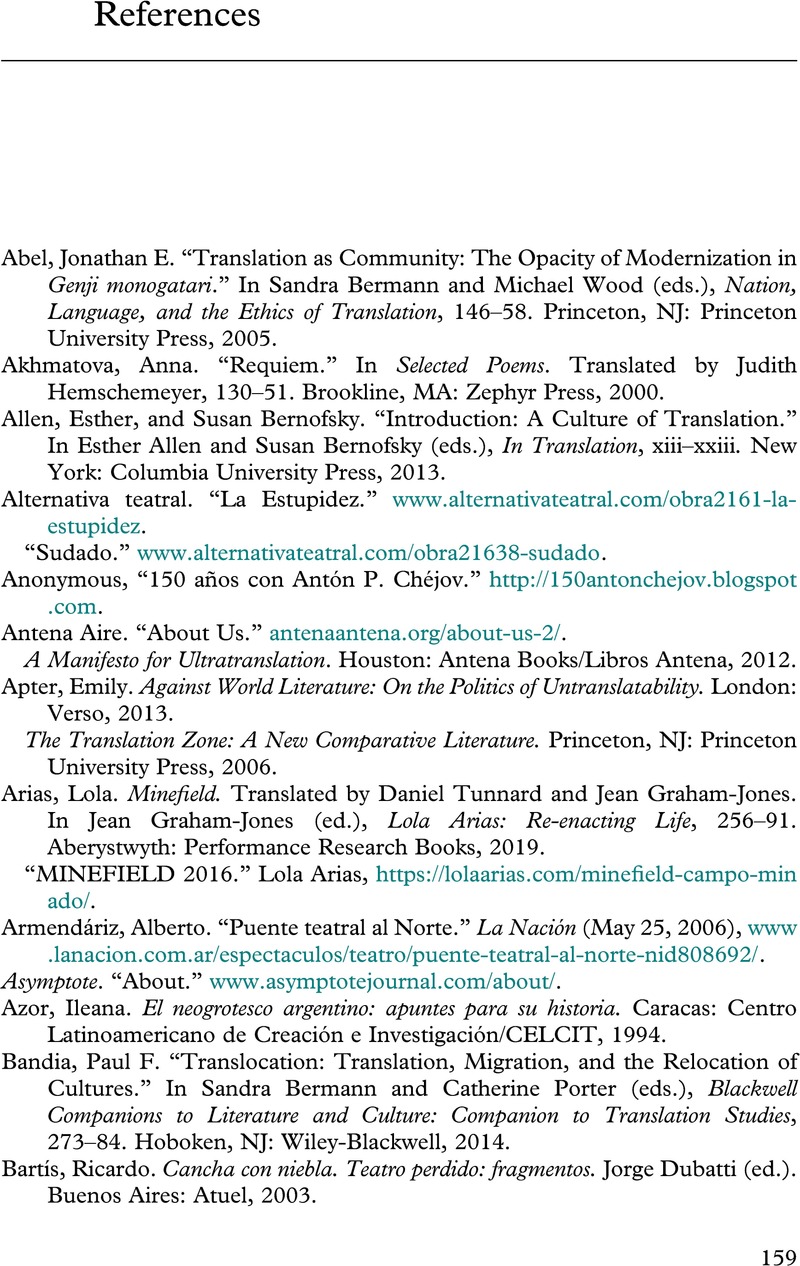Book contents
- Contemporary Performance Translation
- Cambridge Studies in Modern Theatre
- Contemporary Performance Translation
- Copyright page
- Contents
- Figures
- Acknowledgments
- Introduction
- 1 Translationality in Performance
- 2 The Over-translated, the Under-translated, the Untranslatable, and the Limits of Performance Translation
- 3 Translationality and the Atypical Actor in Performance
- 4 Translationality and the Decolonial Gesture in Performance
- Conclusion
- References
- Index
- References
References
Published online by Cambridge University Press: 19 December 2024
- Contemporary Performance Translation
- Cambridge Studies in Modern Theatre
- Contemporary Performance Translation
- Copyright page
- Contents
- Figures
- Acknowledgments
- Introduction
- 1 Translationality in Performance
- 2 The Over-translated, the Under-translated, the Untranslatable, and the Limits of Performance Translation
- 3 Translationality and the Atypical Actor in Performance
- 4 Translationality and the Decolonial Gesture in Performance
- Conclusion
- References
- Index
- References
Summary

- Type
- Chapter
- Information
- Contemporary Performance TranslationChallenges and Opportunities for the Global Stage, pp. 159 - 173Publisher: Cambridge University PressPrint publication year: 2024

